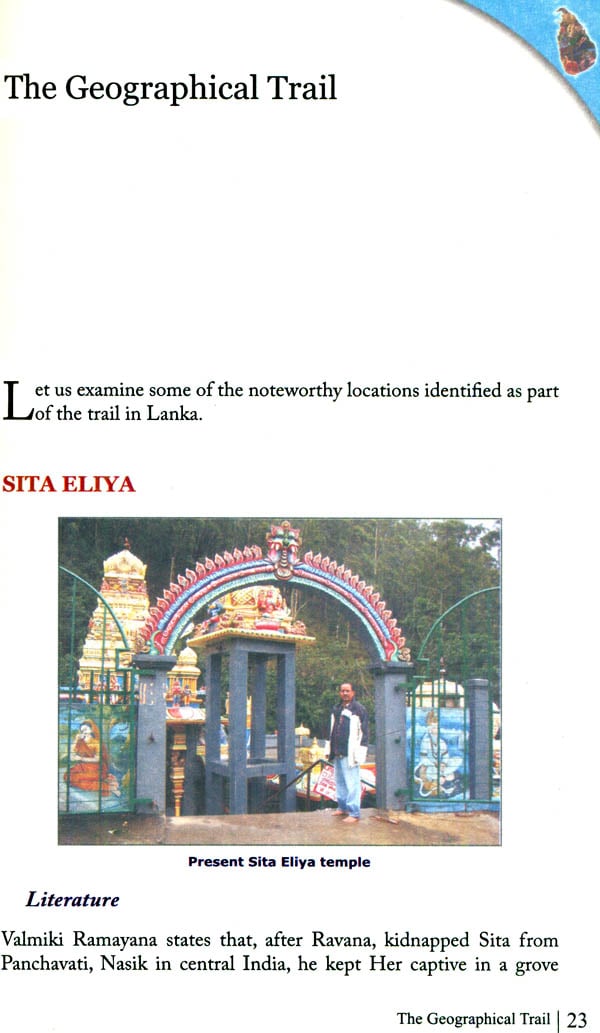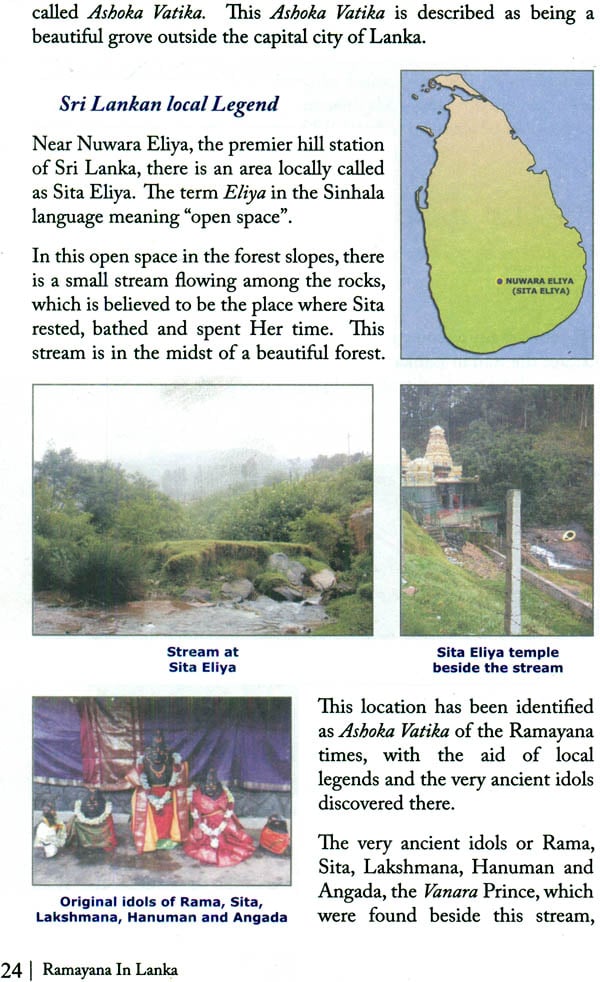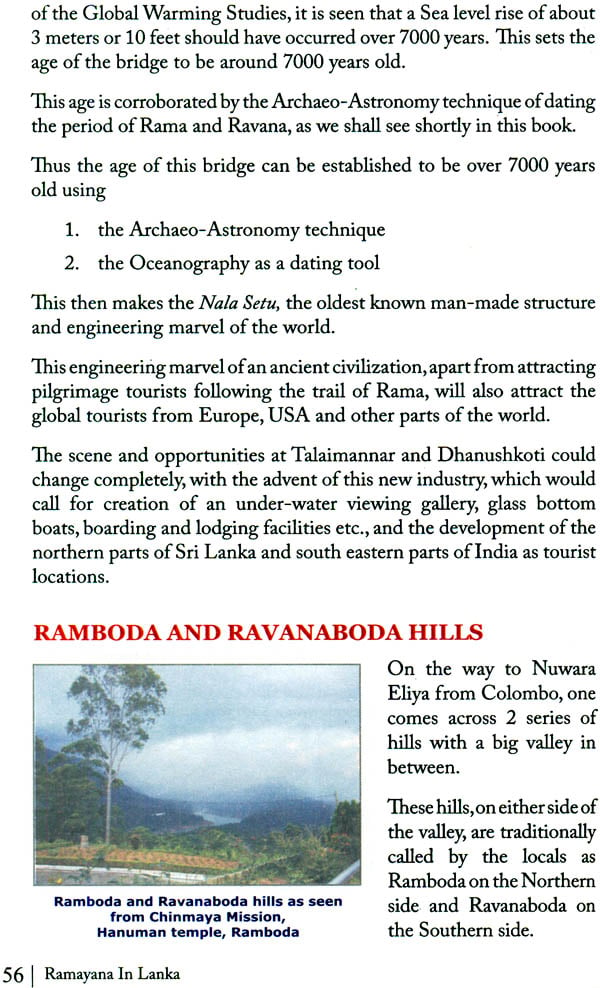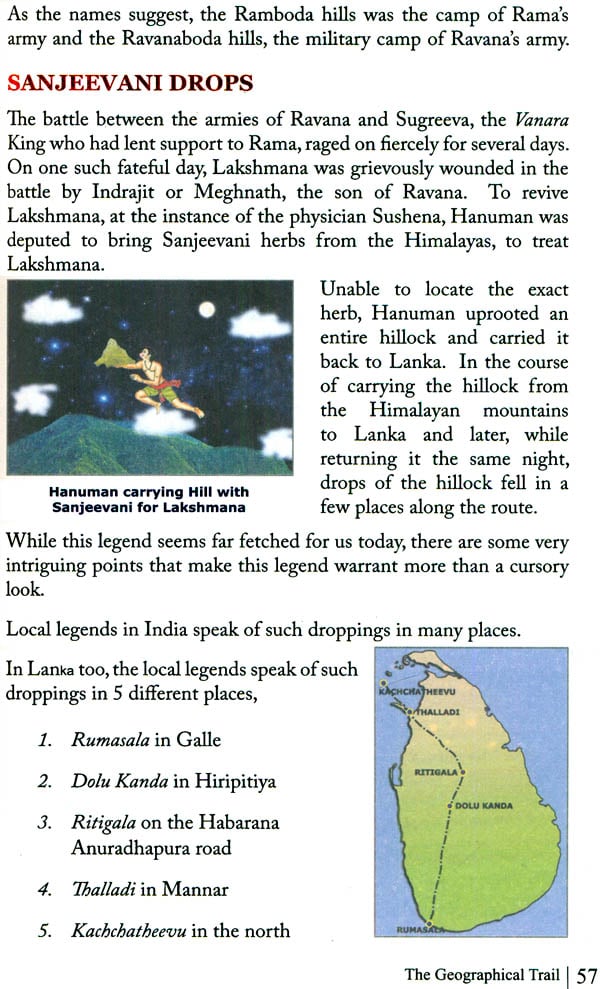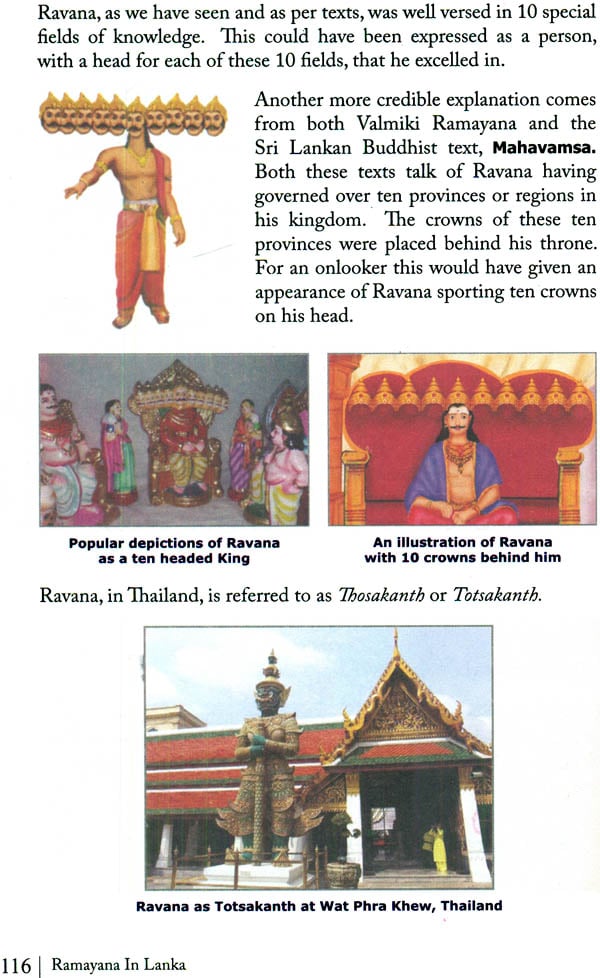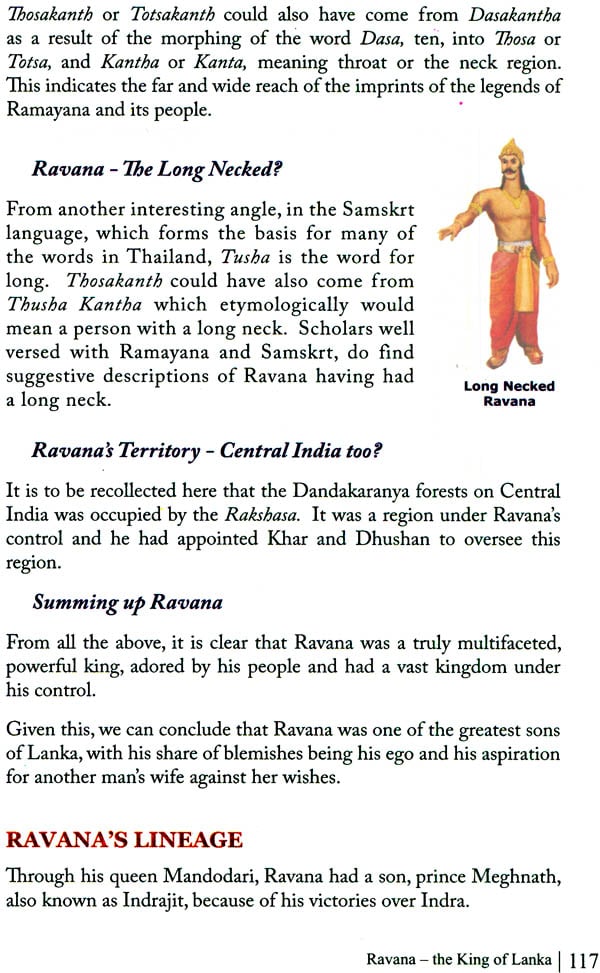
Ramayana in Lanka
Book Specification
| Item Code: | NAF344 |
| Author: | D.K. Hari and D.K. Hema Hari |
| Publisher: | Sri Sri Publications Trust |
| Language: | English |
| Edition: | 2013 |
| ISBN: | 9789380592183 |
| Pages: | 128 (Throughout Color Illustration) |
| Cover: | Paperback |
| Other Details | 8.0 Inch x 5.5 Inch |
| Weight | 180 gm |
Book Description
Ramayana is a historical epic of ancient India. A substantial portion of the events of Ramayana unfolded in the island of Lanka. So, it is as much a history of Sri Lanka as it is of India. If Rama is historical, so must also be Ravana, Vibhishana and the other in Lanka then.
Just as Rama was a great king of India, Ravana was a great king of Lanka. This work looks at the events of Ramayana from the land of Lanka.
It takes us on a geographical and historical trail across Sri Lanka, to understand Ravana, his qualities his kingdom and his people better.
I have great pleasure in sending this message to the most recent book written by Hari’s in India on ‘Ramayana in Lanka’.
The events of Ramayana are as much an integral part of Sri Lanka as it is of India. On a closer look, we find that a good proportion of the events of Ramayana had taken place in the island of lanka.
The Tourism Authorities of Sri Lanka, over the last five or more years, have been endeavoring to bring out these facts through a series of exchange programmes between India and Sri Lanka under the name of Ramayana Trails in Lanka. So far there are over 50 sites identified by the Sri Lanka Tourism Development Authority which are believed to be associated with the happenings of the events relating to Ramayana in Lanka.
I am happy to note that D.K. Hari and D.K. Hema Hari of India, the conceptualizers of Bharath Gyan, have under taken in depth research in bringing out the historicity and timeline of Rama in their book on Historical Rama. In continuation of that work, they have brought out this presents publication on ‘Ramayana in Lanka’ an enlighten piece of work which should form the basis for further research and documentation in this field.
They are, I believe, not the pioneers in the field of documentation of Ramayana Trails in Lanka. There have been many earlier attempts both by the Indian and the Sri Lankan authors as mentioned very generously in this book on Ramayana in Lanka. However what is special in their work is the fact that they have also tried to bring out some of the noble qualities of Ravana thereby giving a balanced view of the whole episode, which I must say is a rare approach.
This book, apart from being a source of education for the Indians about Sri Lanka, will also help the Sri Lankans to look at their own nation and its history from a new perspective.
Just as the Buddists in Sri Lanka have been undertaking pilgrim tours to Buddha Gaya and other holy Buddhist pilgrim places in India, this book should now spur the Indians to visit Sri Lanka to connect parts of their history and culture with those of Sri Lanka and start relating stories about the pristine beauty of Sri Lanka and her people.
It is my fervent hope that this book will foster a much closer and better understanding among the peoples of both these neighboring countries who share the same culture, the same civilization and the same historical background.
Ramayana is one of the epics of ancient India. It is a chronicle of the events and lives of personages who had a role to play in the life history of Rama, the central character of the epic. It was not restricted to the land of ancient India, but also extended to the land of Lanka.
Ramayana has always been classified as a historical text, an Itibasa of this land, Itibasa meaning, thus happened.
Over the last 700 years, many have written about the noble nature of Rama and the other persons in the Ramayana story. But there have been only a few instances of scholars who have worked on and written about the historical of Rama and the others in the Ramayana Itibasa.
At Bharath Gyan, as part of our compilation on the knowledge of India, we have also compiled various data and facts on the historicity of Rama, one of the popular legendary heroes of the land, venerated as an incarnation of God. It is available in detail in a separate book titled, “Historical Rama”.
About 500 sites in India are identified today as sites associates with the historical period of Rama and Ravana, the main characters of the Ramayana legend. Similarly close to 50 sites have also been identify in Sri Lanka.
Given this ground fact, it is surprising that there have been few attempts to look at the historicity of the events from the Lankan perspective.
The histories of modern day India and Sri Lanka go hand in hand.
For Indians, if Ravana and events of Lanka are proved to be historical, then it goes to prove the historicity of Rama too.
Similarly, for Sri Lankans, if the historicity of Rama is established then it goes to establish he historicity of Ravana and the history of Sri Lanka, because, if Rama is historical, then so must Ravana also be and along with that the events of the Ramayana and the locations of the events of the Ramayana in India and in Sri Lanka.
The ancient histories of both India and Sri Lanka become mutually corroborated and converge as they rightfully should, with this effort of mutually ratifying the age old legends, traditions, geography and practices of both these nations.
It is heartening to note a few concerted effort by the Sri Lankan Tourism Board, particularly Mr. Kalaiselvam, the Director General of Tourism of Sri Lanka, in this direction and organizations such as Chinmaya Mission of Sri Lanka and a few, well read Buddhist Monks and Scholars.
Our work, “Ramayana in Lanka”, is part of our effort to understand the historicity of Rama, Ravana and others of their times, along with the history scholars.
We hope this book encourages more people to research this subject further and bring out the facts for the people at large. This effort will help to better the understanding of the history of these two nations by their respective peoples. A better view civilizations change over time can also bring the peoples of these two neighboring nations, even closer.
| 1 | Benedictory Note | 5 |
| 2 | About Bharath Gyan | 7 |
| 3 | Foreword | 9 |
| 4 | Preface | 11 |
| 5 | Acknowlegments | 13 |
| 6 | Ramayana, also the story of Ravana | 15 |
| 7 | Ramayana, an Itihasa, Historical Text | 19 |
| 8 | Ramayana, a Geographically correct text | 21 |
| 9 | The Geographical Trail | 23 |
| 10 | Ravana's Kingdom of Lanka | 65 |
| 11 | Locations of the Lanka of Ramayana | 85 |
| 12 | Dating the lifetime of Rama and Ravana | 89 |
| 13 | Turnings point in Ramayana | 101 |
| 14 | Ravana the king of Lanka | 103 |
| Conclusion | 121 | |
| Epilogue | 125 |
